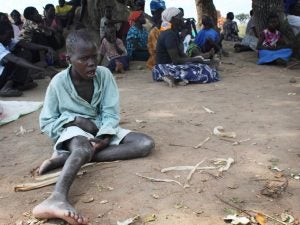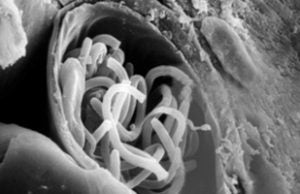 Nodding Syndrome is described as a rare form of Epilepsy that disables children in Eastern Africa. Chances are you have never heard of Nodding Syndrome before. I hadn’t until recently. This is likely because it is a rare disease that impacts children in East Africa, places the current President of the United States dismisses as “shithole countries.”
Nodding Syndrome is described as a rare form of Epilepsy that disables children in Eastern Africa. Chances are you have never heard of Nodding Syndrome before. I hadn’t until recently. This is likely because it is a rare disease that impacts children in East Africa, places the current President of the United States dismisses as “shithole countries.”
Nodding Syndrome was first documented in Tanzania in the 1960s. Cases were later diagnosed in the Republic of South Sudan in the 1990s and in northern Uganda in 2007. Nodding Syndrome affects children ages 5-15 years old and according to the World Health Organization is characterized as “causing progressive cognitive dysfunction, neurological deterioration, stunted growth and a characteristic nodding of the head.” The disease got its name from the epileptic seizures, which weaken muscles in the head and neck that cause head nodding. The stunts in growth and the brain caused by Nodding Syndrome result in mental handicap among those affected. The disease can even result in death, although a number of deaths cannot be directly attributed to the condition.
The Centers for Disease Control and Prevention (CDC) became involved in 2009 and in 2013 partnered with Uganda’s Ministry of Health to conduct a large survey to determine the burden as well as the geographic distribution of the disease.
Despite numerous and extensive investigations in all three countries, very little was known about the cause of the disease until recently. There were a number of theories surrounding the cause of the mysterious illness such as toxins, chemicals in the environment, or nutritional deficiency.
 In 2012, after mystifying doctors and researchers for decades, a possible cause of Nodding Syndrome was identified. It is believed to be the body’s response to a parasitic worm known as Onchocerca volvulus. The culprit worm that causes Nodding Syndrome is believed to be the same worm responsible for Onchocerciasis, more commonly known as river blindness, an eye infection that’s also found in East Africa.
In 2012, after mystifying doctors and researchers for decades, a possible cause of Nodding Syndrome was identified. It is believed to be the body’s response to a parasitic worm known as Onchocerca volvulus. The culprit worm that causes Nodding Syndrome is believed to be the same worm responsible for Onchocerciasis, more commonly known as river blindness, an eye infection that’s also found in East Africa.
The CDC and the Uganda Ministry of Health have continued investigations, including studying the brains of those affected, to better understand the pathophysiology of this mysterious illness. There is currently no cure, but by studying those who have been infected, researchers hope to prevent this debilitating disease from affecting more children.



